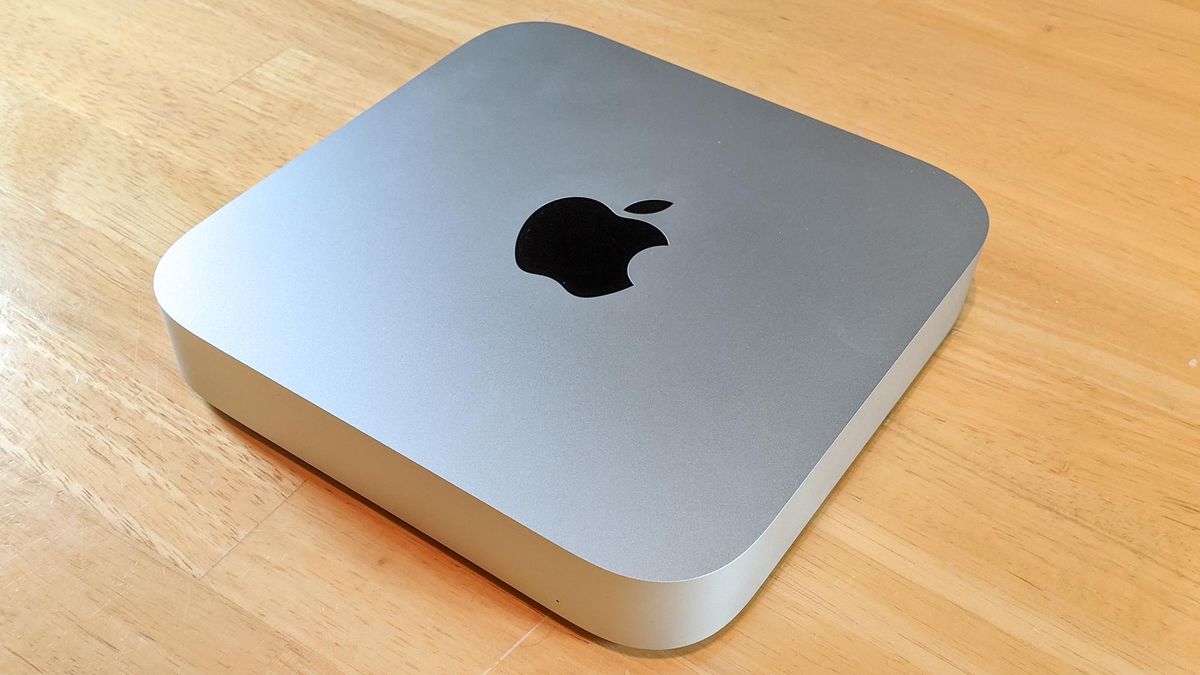When the Apple M1 chip (also known as Apple Silicon) was first presented at the company’s event on November 10, it was clear that the new chip would be energy efficient. Apple talked at length about improving battery life and performance – two things that don’t usually go hand in hand – but we are only now evaluating how energy efficient the chip is.
Apple has published data on how the Mac mini with an M1 engine compares to previous computers, and there is no dispute in terms of power consumption and thermal output.
As you can see in the republished data section below, Apple data goes back to the original 2005 PowerPC G4 packaging model, and the M1 powered 2020 version improves over its predecessors in each metric of efficiency measured.
| Model | Power consumption (idle) | Power consumption (load) | Residual heat (idle) | Residual heat (load) |
|---|---|---|---|---|
| Mac mini (M1, 2020) | 6.8 W | 39W | 23.2 BTU / h | 133 BTU / h |
| Mac mini (Intel Core i7, 2018) | 19.9W | 122W | 68 BTU / h | 417 BTU / h |
| Mac mini (Intel Core i5, 2014) | 6W | 85W | 20 BTU / h | 290 BTU / h |
| Mac mini (Intel Core i5, 2012) | 11W | 85W | 38 BTU / h | 290 BTU / h |
| Mac mini (Intel Core i5, 2011) | 14W | 85W | 38 BTU / h | 290 BTU / h |
| Mac mini (Intel Core 2 Duo, 2010) | 10W | 85W | 34 BTU / h | 290 BTU / h |
| Mac mini (Intel Core 2 Duo, 2009) | 14W | 110W | 48 BTU / h | 376 BTU / h |
| Mac mini (Intel Core 2 Duo, 2007) | 23W | 110W | 79 BTU / h | 376 BTU / h |
| Mac mini (Intel Core Duo, 2006) | 23W | 110W | 79 BTU / h | 376 BTU / h |
| Mac mini (PowerPC G4, 2005) | 32W | 85W | 110 BTU / h | 290 BTU / h |
To emphasize exactly how far we’ve come, it’s fascinating to note that the original Mac mini – with its 1.25 GHz processor and 256 MB (yes, MB) of RAM – used up almost the same amount of power when idle as the current model uses under load. We really have come a long way.
Of course, while most of the data is (in terms of home computing) an old story, it is the statistics of the new Mac mini compared to the 2018 6-core Intel Core i7 model that really show you the improvement. The new Mac mini consumes ~ 13W less power when idle and an incredible 83W less under load. This means that while the Mac 2018 would spend 68 BTU / h when idle and 417 BTU / h under load, the newer model spends only 23 BTU / h and 133 BTU / h in the same states.
Of course, this is not an entirely fair comparison, because the Mac mini 2018 used a desktop processor and the new Mac mini packs the same chip found in the new MacBook Air M1 and MacBook Pro M1. But given that the Mac mini with Apple M1 outperforms the 2018 model by more than 50% in benchmark tests, it seems a moot point.
As we wrote on our Mac mini with M1 analysis, it is “cheaper, faster and keeps everything we love about the Mac mini while changing internal components and where Apple is positioned in the larger industry”. Therefore, there is likely to be a rumor that Apple will give the iMac 2021 the following M1 treatment.
Those in need of broader software support will be relieved to learn that Apple is apparently also planning an Intel version of the iMac 2021 for those who are not yet ready to make the transition. Judging from what we’ve seen, these consumers will have to settle for higher electricity bills.
